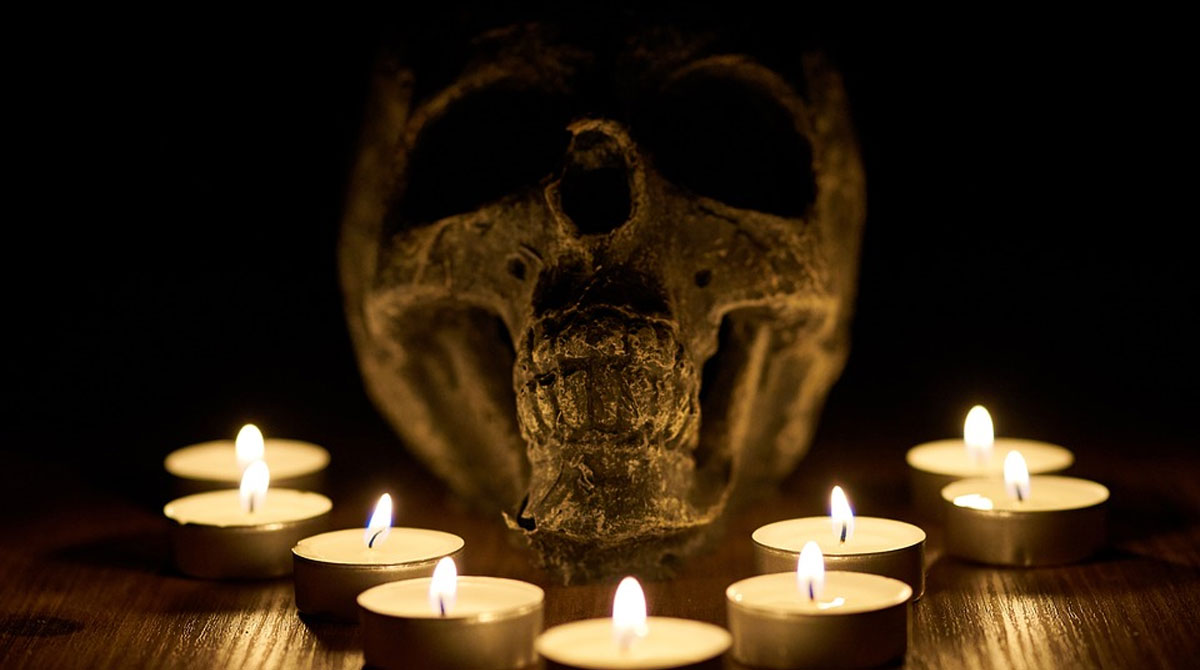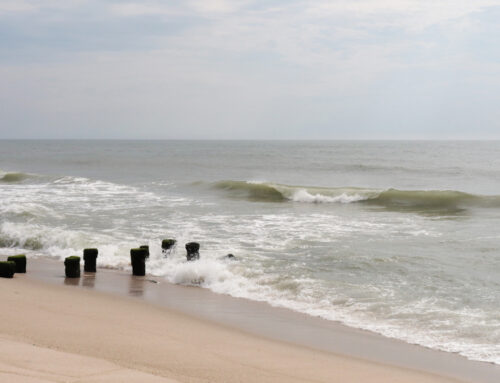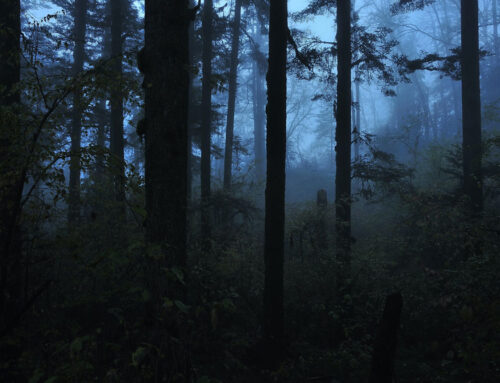In the 1970s satanic cults were everywhere. Or at least that’s what popular culture would have you believe. In apartment complexes, suburban planned communities, and quiet rural towns – somewhere lurking beneath the all-too-normal exterior was a sinister group ready to induct you – or worse, your child – into the worship of the devil.
Typically it was a handsome leader tucked away in a secluded mountain retreat or hiding deep in the desert luring wayward youths to a life of sin. One day you’re a fun-loving youngster looking for some kicks; the next you’re sacrificing a chicken to Beelzebub. Evil was everywhere hidden in plain sight.
Except it wasn’t. Oh, it was a good narrative to be sure; one that many authors and filmmakers picked up on and one that many people believed was real. There were reasons for this. There were high-profile and widely publicized cases of violence that – while being isolated, individual situations – were often cited as proof of some nefarious organization hidden in plain sight.
The most infamous example of a seeming cult gone hideously wrong is probably the Manson Family. Charlie Manson through a combination of charisma and drugs convinced people that he was more than just a man and had them commit despicable acts in his name. And that notion, the idea of the crazy, power-mad, brainwashing cult leader became seared in the public’s mind. It wasn’t too much of a leap to associate the devil with this.
But where did this all start, this notion of the “evil cult” in public thought? Personally, I think it sprung out of the Hippie movement of the 1960s. Or should I say a misunderstanding of the Hippie movement and out of distrust and opposition to it.
Let me say first that cults are not a new thing – there are cults going back to ancient times – but in the modern sense or at least modern perception of how cults are perceived – you can make a direct correlation between vehement distrust of youth culture, a rise in public awareness of violent crime and the availability and dissemination of new ideas – social, political and spiritual. These things frightened people, they confused people and in order to make it make sense it – a nefarious organization or a capital “E” evil had to be behind it. And so the modern idea of the cult as a threat to civil society was born.
The Hippie movement itself was rather innocuous. The overarching idea of being a hippie was to drop out of society, to go against the social norms, and to be ruthlessly different. This often involved gathering in large crowds and dressing funny and ingestions copious amounts of various mind-altering substances (also making awesome music but that’s beside the point). But the conservative, straight-laced, mainstream culture was horrified by this. Hippies were seen at best as disrespectful and at worst flat-out evil.
To add fuel to this growing fear of counterculture was the fact that they began to congregate in communities or communes. Now on the surface, the commune was a nifty little idea, a group of people living together, each doing their part, growing their own food, living off the grid – a pseudo-utopian ideal. Most of these communities were fine. They worked well for a little while but eventually would disband over disagreements of disinterest. Many saw it as just an extended vacation before getting back to the “real” world.
But in public perception, these communes were brain-washing factories where lurid sex orgies were performed while gobbling handfuls of LSD. And cases like the Manson family didn’t dissuade people of this perception.
At the same time, there was also the rise in Eastern spirituality – specifically Indian spirituality. This usually involved sitting with a teacher – a guru – going off of retreats in far away, secluded areas. Again, in reality, this was usually harmless and often helpful – you learned how to meditate and ate vegetarian food and maybe didn’t get angry as much. But there were instances – very publicized instances – of gurus who preached abstinence and poverty while using their position to have massive amounts of sex and drive Roles Royce’s. This gave rise to the idea of the charismatic teacher/prophet bending his unsuspecting, gullible subjects to his diabolical will. A charlatan who steals your money if you are lucky – your soul if you are not.
Eventually these things – the sex/drug commune and the charlatan guru – became conflagrated. And the idea of the modern cult was nearly complete. But there was still one thing missing – the devil.
If you’ve ever seen a Hammer film from the late 60s, or early 70s you know that all self-respecting cult members wear long, hooded robes, they carry ornate knives with long, curved blades, they congregate in secret rooms entirely lit by dozens if not hundreds of candles, the walls, floor and ceiling are painted with pentagrams and at one end of the room, there is always a high alter with a goat-headed fellow with a penchant for blood sacrifice. It’s very medieval in a theme park kind of way.
This look actually comes from a 20th-century influence of folks like Helena Blavatsky, the founder of Theosophy, and Alistair Crowley who helped popularize eastern mysticism (or at least their hybrid version of it) and the idea of hidden knowledge and the secret society. The subject of Theosophy and other esoteric magical philosophies is very long and complicated and rather interesting and deserving of an article all its own but suffice to say that look and feel was cut and pasted onto the template of the guru-led sex commune and voilà! The modern idea of the 70s Satan cult was born.
And authors ran with it in movies and TV – both mainstream and b-level quality – novels and even music. Alice Cooper? Black Sabbath anyone? Even the actual church of Satan started by Anton Levey took this stylized look and incorporated it into his new social club.
As a complete aside – in the early 90s I lived in San Francisco and one day I was in a grocery store standing in the checkout line two people ahead of me was Anton Levey himself – with his bald head and pointed goatee – he very satanically bought a loaf of bread and some butter. And I remember thinking to myself, “huh, the devil likes toast.” This has nothing to do with what I was talking about it’s just a fun story to tell at parties.
All of this made for very entertaining genre fiction. And that’s really all it was, fiction. In reality, there isn’t and never was a systematized cult of devil worship. It simply does not exist. Even Levey’s Church of Satan is really just a hyper-stylized hedonistic lifestyle self-help program more interested in an epicurean ideal than any kind of true evil.
But the non-existence of devil cults didn’t actually matter. The times were confusing. There was violence and a rise in crime. People were wanting change and were willing to be forceful about getting it. Young people were disruly and don’t get me started on the terrible and explicit music they were listening to…and there were many who were frightened by this. There had to be an explanation. There had to be a reason behind it all, a sinister reason. There had to be evil.
As the decade moved along the idea of Satan cults began to creep more and more into the public consciousness. Articles were written and expose of former cult members were published. The majority of these were found to be fabrications but that didn’t stop talk shows and magazines from pushing the idea of evil cults running rampant in the country.
The idea of the satanic cult that began in the 1970s was created because of real fears people had about real issues happening at the time and as a way to find a cause for those issues that didn’t require one to actually look too closely at the underlying reasons behind them. It is much easier to blame a faceless evil than it is to find flaws within yourself. And while the satanic cult hiding in suburbia makes for a good movie it can, if allowed to fester and grow can cause real harm to real people.
This is exactly what happened when this all culminated in the “Satanic Panic” of the 1980s which led to a full-on mania in the public and press and many, many lives were ruined out of fear and greed. But that is a story for another day.
This article was originally used as the main topic for Episode 6 of the Nexus of All Realities – a Man-Thing Podcast. This and many other interesting topics can be heard on that podcast along with discussions on the world’s second most famous swam-based comic book character. Hosted by Paul Matthew Carr.







Leave A Comment